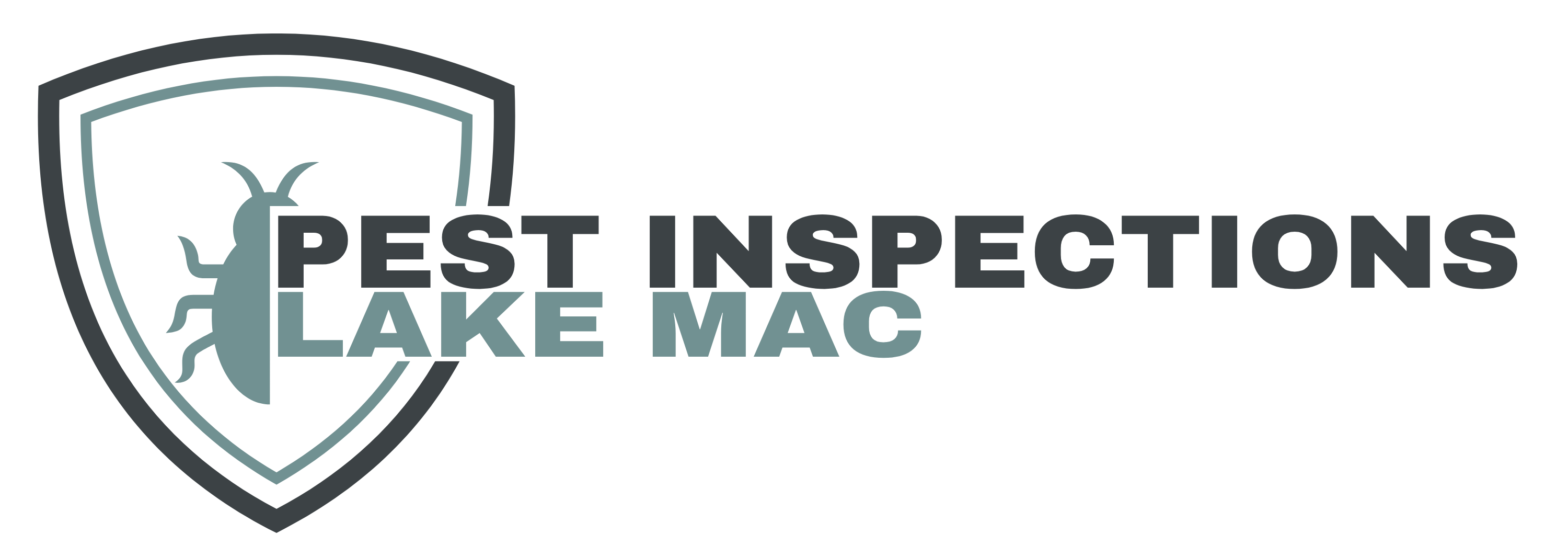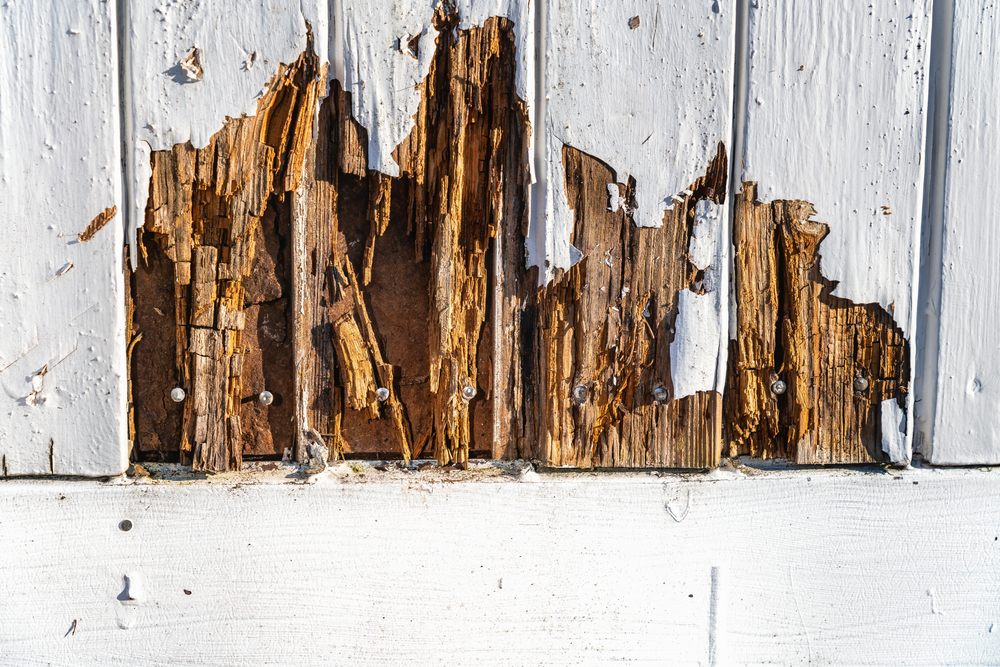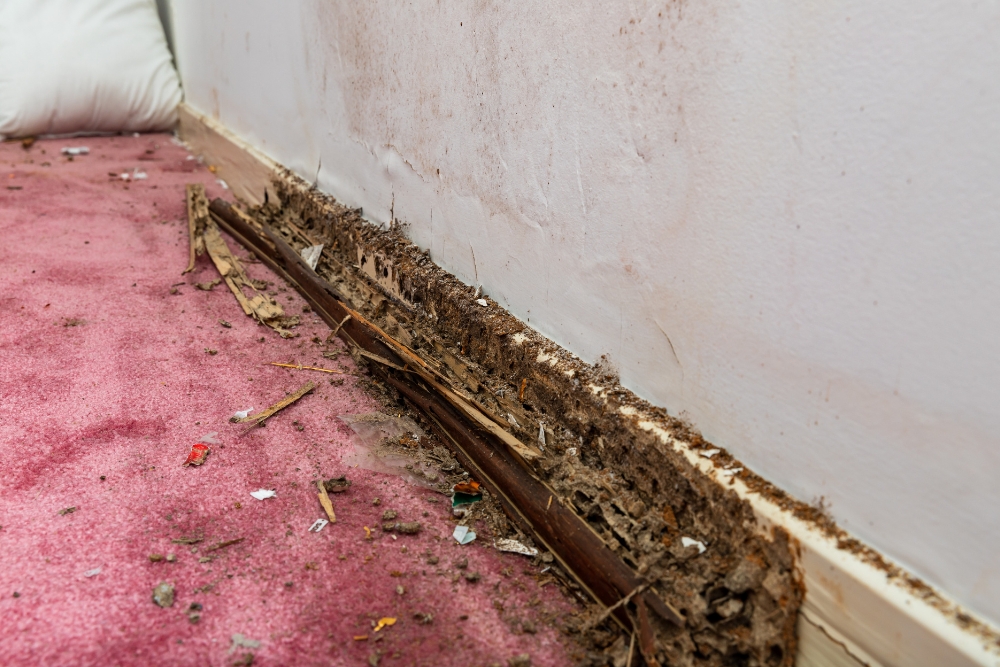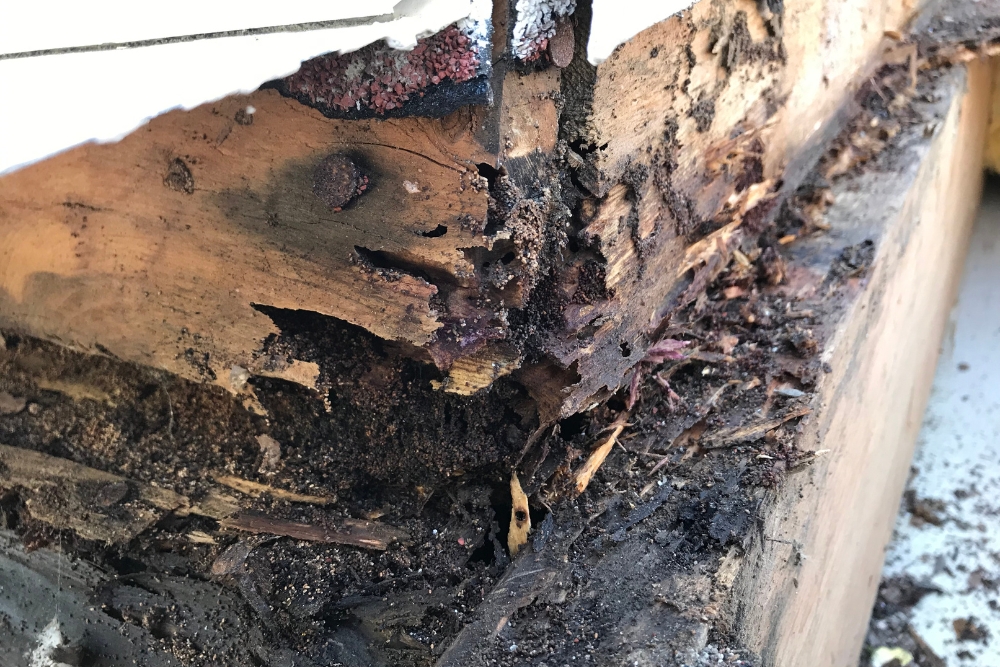In the world of home maintenance and care, timber represents both a prized asset and a vulnerable target. The natural beauty and warmth it adds to a home are undeniable, yet without proper attention, this vital material can become the breeding ground for unwanted pests. These silent invaders, ranging from termites to wood borers, possess the ability to compromise the structural integrity of your home from within, often unnoticed until substantial damage has occurred.
The key to protecting this essential component of your property lies in understanding the importance of regular maintenance and preventative strategies. This approach not only preserves the aesthetic and structural qualities of the timber but also acts as a crucial barrier against pest infestations.
By adopting proactive measures, homeowners can ensure that their timber remains in pristine condition, safeguarding their sanctuary against potential threats. In this exploration, we unravel the importance of routine timber care and share effective tips to prevent the stealthy advance of pests, ensuring your home remains a fortress of safety and beauty.
Key Takeaways
- Regular inspections and maintenance are crucial for spotting early signs of timber pest activity, like mud tubes or wood damage, which allows for quicker action to prevent extensive harm.
- Implementing strategies such as proper ventilation, moisture control, and keeping gardens well-maintained can significantly deter timber pests from infesting structures.
- Using termite-resistant materials and applying protective treatments to timber can provide an additional layer of defence against these pests, helping to preserve the structure’s integrity over time.
- Professional pest inspectors play a key role in identifying hidden threats and advising on the best treatment options to protect timber structures from future invasions.
Understanding Timber Pests
Understanding timber pests is a crucial aspect of maintaining the integrity and longevity of timber structures within any property. These pests, including termites, wood borers, and carpenter ants, are known for their relentless destruction, silently compromising the strength and safety of wooden elements.
To effectively manage and mitigate their impact, it’s vital to recognise the early signs of infestation, which can range from visible holes and sawdust-like frass to the subtle sounds of activity within the wood. Early detection plays a pivotal role in preventing extensive damage, allowing for timely intervention through professional pest control measures or appropriate DIY solutions.
Consequently, property owners should remain vigilant, periodically inspecting timber elements for any indications of pest presence to ensure the structural integrity and aesthetic appeal of their homes are preserved.
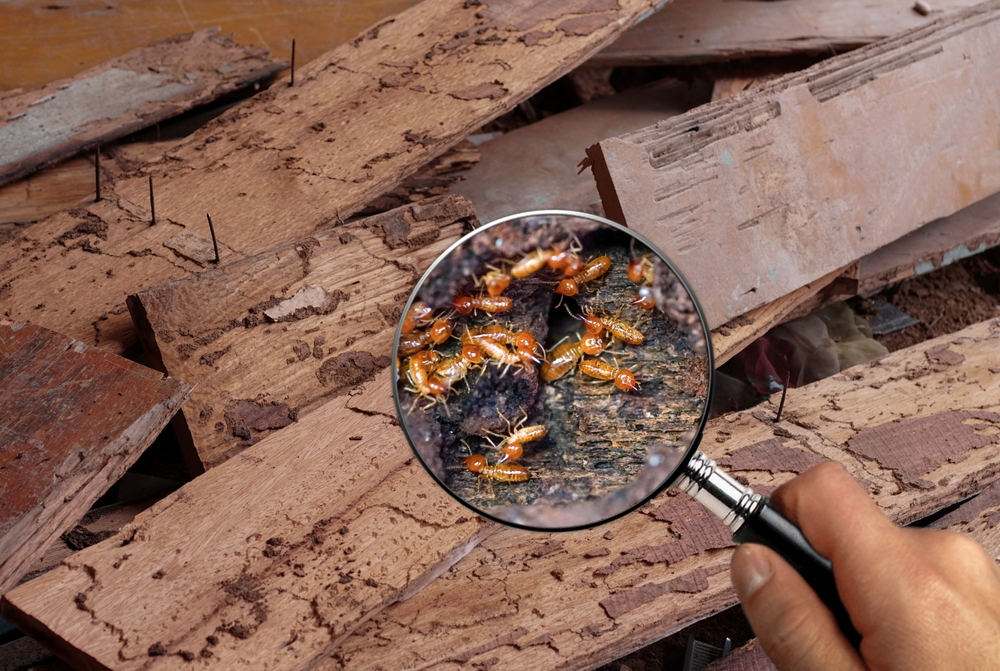
The impact they have on timber structures
Timber pests like termites, wood borers, and carpenter ants can cause severe damage to timber structures. They eat away the wood from the inside, weakening the structure over time.
This not only compromises the strength of buildings but also reduces their lifespan significantly. Regular pest inspections help identify these silent threats early, preventing costly repairs and structural failures.
The presence of these pests often goes unnoticed until it’s too late because they operate hidden within the timber. Damage signs include hollow sounds in wooden elements, visible tunnels or holes, and even powdery dust near wooden surfaces indicating active infestations.
Addressing these issues promptly through professional pest management is crucial for maintaining healthy timber structures. Moving forward into prevention methods offers practical steps homeowners can take to protect their property.
Common types of timber pests
Termites, wood borers, and carpenter ants are the most common types of timber pests. These pests pose a substantial threat to the structural integrity of timber by tunnelling through it and causing extensive damage.
Termites consume cellulose-based materials like wood, paper, and fabric. Wood borers, on the other hand, lay eggs in timber where their larvae feed and grow. Carpenter ants do not eat wood but excavate tunnels to create nests within it.
These pests can cause severe structural damage over time if left unchecked. They often remain hidden within structures or underneath surfaces, making early detection challenging without professional inspection.
Signs of infestation
Signs of infestation can include hollow-sounding timber, discarded wings near windows and doors, and mud tunnels on walls or in wooden structures. Other signs may involve small holes in the wood, piles of sawdust-like material called frass, or the presence of live insects.
Additionally, you might notice sagging floors or ceilings and discoloured or damaged timber. Regular checks for these indicators are crucial to catch infestations early before extensive damage occurs.
Prevention Methods

Regular maintenance and thorough cleaning regimes are foundational practices in safeguarding timber structures from the risks of pest intrusions. Such preemptive measures not only prolong the life of these materials but also maintain their aesthetic and structural integrity.
Proper ventilation is critical in this effort, as it helps to reduce moisture accumulation, a primary attractant for many timber pests including termites and wood borers. Additionally, diligent garden upkeep, including the trimming of overgrown vegetation and the proper disposal of garden waste, can significantly reduce the likelihood of pests encroaching onto timber structures.
By adhering to these practices, homeowners can create an inhospitable environment for pests, effectively protecting their timber investments from potential infestations and the extensive damage they can cause.
Regular maintenance and cleaning
Regular maintenance and cleaning play a crucial role in preventing timber pest intrusions. Here are some essential actions to take:
- Inspect timber structures regularly for any signs of pest activity, such as sawdust, small holes, or mud tubes.
- Keep the surroundings clean and free from debris that may attract pests, ensuring the area around the timber is well-maintained and ventilated.
- Apply protective coatings or treatments to timber if necessary, using suitable products to deter pests and protect against decay.
- Remove any decaying or damaged wood promptly to prevent further infestations.
- Clean gutters and drainage systems to avoid water accumulation near timber structures, reducing the risk of attracting pests.
Taking these simple yet impactful measures can greatly contribute to safeguarding timber against pest intrusions and preserving its integrity for years to come.
Proper ventilation and garden upkeep
To maintain timber structures and prevent pest intrusions, proper ventilation and garden upkeep play a crucial role. The following are key steps to consider:
- Ensure adequate airflow around timber structures by trimming back vegetation and removing debris.
- Regularly inspect gutters, downpipes, and drainage systems to prevent water buildup near wooden surfaces.
- Maintain proper drainage to prevent moisture accumulation around the foundation of timber structures.
- Use gravel or pebble barriers around the perimeter of buildings to deter pests from accessing timber.
- Install vents in crawl spaces or subfloors to promote air circulation and reduce moisture levels.
- Utilise natural pest deterrents in gardens, such as companion planting or incorporating insect-repelling herbs and plants.
- Regularly monitor garden beds for signs of decay or pests, addressing issues promptly to minimise risks to nearby timber structures.
By adhering to these practices, homeowners, building inspectors, and pest inspectors can contribute significantly toward protecting timber structures from potential pest threats.
Choosing suitable materials for timber structures
When it comes to timber structures, selecting suitable materials is crucial in preventing pest intrusions. Opt for naturally resistant timber species such as cypress, cedar, and redwood when building or renovating your structure.
These woods contain natural compounds that deter pests and are less susceptible to decay, enhancing the longevity of your timber structure.
Additionally, using treated timber with preservatives can add an extra layer of protection against wood pests. Pressure-treated lumber is infused with chemicals that make it highly resistant to termites and other wood-destroying organisms.
Professional Pest Control
Pest control professionals play a vital role in preserving the integrity and longevity of timber structures through their expertise and thorough inspection routines. These specialists are adept at uncovering even the most discreet signs of pest activity, ensuring that infestations can be identified before causing significant damage.
Upon detecting pests, they provide a range of treatment options tailored to the specific type of pest and the extent of the infestation, employing methods from chemical treatments to physical barriers that are designed to eliminate pests while minimising harm to the timber and surrounding environment.
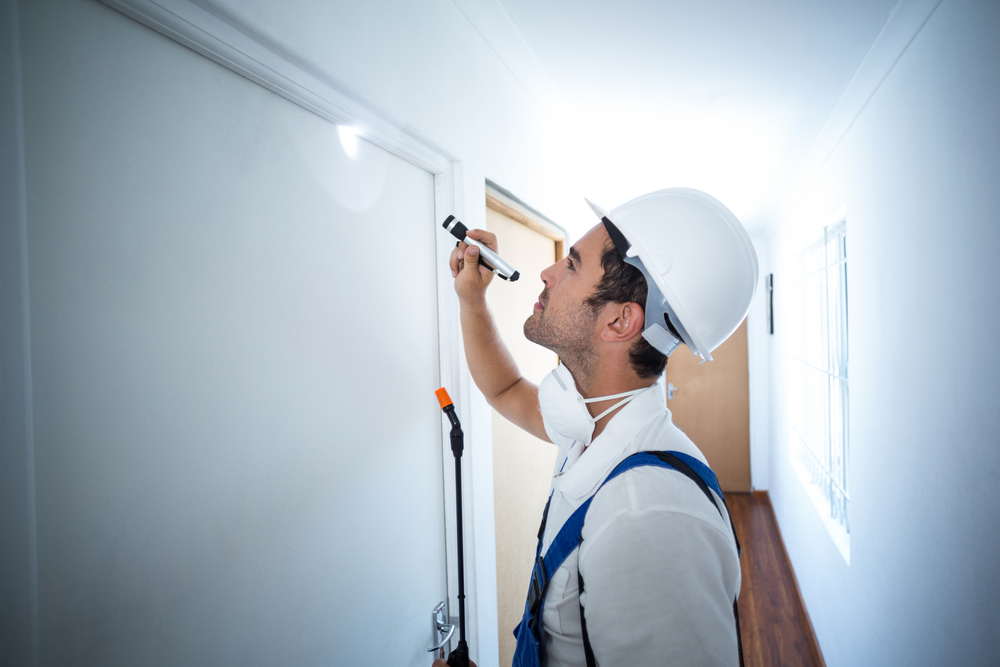
Furthermore, these professionals can offer invaluable advice on preventive measures, guiding property owners on how to create conditions less favourable to pests through changes in maintenance practices and modifications to the property itself. Engaging with pest control professionals for regular inspections and treatments forms a crucial defence, granting timber structures the best possible protection against the persistent threat of pest intrusion.
Importance of professional inspection
Professional inspection by qualified pest inspectors is crucial to safeguarding your timber structures from silent threats like termites and wood borers. These experts have the knowledge and tools to detect early signs of infestation that may go unnoticed during routine checks.
They use their expertise to identify vulnerable areas and provide tailored recommendations for prevention and treatment, ensuring the long-term protection of your property. Regular inspections also offer peace of mind, allowing you to address any potential issues before they escalate into costly damage or decay.
Regular inspections by professionals should be a priority for homeowners and building inspectors alike, protecting against unforeseen timber pest intrusions. Pest inspectors can help you stay ahead of potential threats with timely detection and expert guidance on protective measures.
Different treatment options
To effectively combat timber pests, a comprehensive approach that considers various treatment options is essential. For those opting for chemical solutions, applying termiticide to the soil surrounding and beneath timber structures offers a robust barrier treatment for both new and existing buildings, aiming to deter subterranean termites.
Alternatively, baiting systems present a strategic approach by installing termite bait stations around the property’s perimeter and employing termite bait with an active ingredient designed to eliminate entire colonies. On the other hand, physical barriers offer a preventive measure; either by incorporating stainless steel mesh or chemically impregnated sheets during construction or using treated timber and metal caps to protect the most vulnerable areas.
Each of these methods comes with its own set of advantages and limitations. Hence, understanding the intricacies of each option is paramount in developing an effective, long-term protection plan against the relentless threat posed by timber pests.
Preventative measures for long-term protection
To protect timber structures from pest intrusions, it is essential to implement long-term preventative measures. These strategies are vital in safeguarding against potential infestations and preserving the integrity of timber. Here are effective methods for long-term protection:
- Regular inspections: Conducting routine inspections allows for the early detection of any signs of pest activity, enabling prompt intervention if necessary.
- Implement moisture control: Ensuring proper ventilation and addressing moisture issues within the structure helps deter timber pests that thrive in damp environments.
- Utilise termite-resistant materials: Incorporating termite-resistant materials during construction or renovations can serve as an additional barrier against infestations.
- Maintain garden surroundings: Regular maintenance of the external environment around timber structures aids in preventing pest access and nesting.
It’s crucial to remain proactive in implementing these preventative measures to mitigate the risk of timber pest intrusions, ensuring the longevity of your property and its structural components.
DIY Insect Control

Embarking on a journey to tackle timber pests independently can be both a rewarding and challenging endeavour. The advantages include immediate action, potential cost savings, and the satisfaction of hands-on problem-solving.
However, homeowners must be conscientious about employing the correct techniques and choosing the right products, as improper use could inadvertently harm the timber or, worse, the home’s inhabitants. Furthermore, despite the best efforts, some infestations may be too advanced or the pests too resilient for DIY methods to be effective, highlighting a significant disadvantage.
In such cases, recognising when the situation surpasses your expertise and requires professional intervention is crucial for ensuring not just the eradication of the pest but also the long-term health and safety of your timber structures and, by extension, your home.
Pros and cons
We understand the importance of keeping our homes and buildings free from timber pests. Part of this effort involves deciding whether to tackle the issue ourselves or call in the experts. Here, we explore the pros and cons of DIY insect control straightforwardly.
| Pros | Cons |
|---|---|
| Cost-effective in the short term | Potential misuse of pesticides can lead to health risks |
| Immediate action can be taken without waiting for professionals | Lack of expertise may not address the root cause, leading to recurring infestations |
| A customisable approach based on personal research and preference | Incorrect or inadequate treatment might damage the timber further |
| Learning opportunity about pest behaviour and prevention methods | Time-consuming with no guarantee of success |
Choosing the right approach is crucial for the health of our timber structures. While the DIY method can offer immediate and tailored solutions, it carries risks that might outweigh the benefits. Always consider the severity of the infestation and the long-term implications of the chosen method.
Importance of proper technique and products
It’s crucial to use proper techniques and products when dealing with timber pests. Employing appropriate methods for treating and preventing infestations is essential in safeguarding your property from the silent threat of these destructive intruders.
By using effective products and applying correct techniques, you can mitigate the risk of timber pest damage and ensure the longevity of your timber structures. With careful attention to detail and the right treatment approach, you can protect your property from termite infestations, wood borers, carpenter ants, and other timber pests.
Selecting suitable products for managing timber pests is a fundamental aspect of home maintenance in Australia. Utilising recommended solutions tailored towards combating these ever-evolving threats plays a pivotal role in preserving the integrity of timber structures.
When to seek professional help
If you notice any unexplainable timber damage, it’s essential to engage a professional pest inspector. Professional help is crucial for identifying the extent of the infestation and determining appropriate treatment options.
They can conduct a thorough inspection using specialised tools and provide tailored solutions to safeguard your timber structures from further damage.
When signs of decay or infestation become apparent despite your preventive efforts, it’s time to involve a professional pest control service. Pest inspectors have the expertise to address complex timber management issues while also providing long-term preventative measures against wood-boring insects and similar pests.
Call Us!
By regularly maintaining timber structures and keeping an eye out for signs of infestation, homeowners can effectively prevent the intrusion of timber pests. These practical strategies involving proper ventilation, garden upkeep, and using suitable materials are easy to implement and efficient in safeguarding against wood damage.
Implementing these methods is crucial as they can lead to significant improvements in preventing decay and protecting the integrity of timber structures. For further guidance on this topic or professional pest control services, readers can explore additional resources to deepen their understanding.
Remember that taking proactive steps now will ensure a pest-free environment for years to come.
